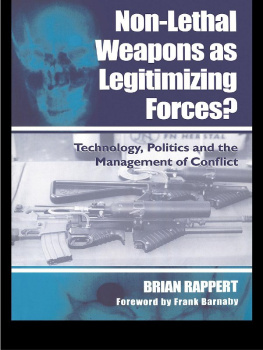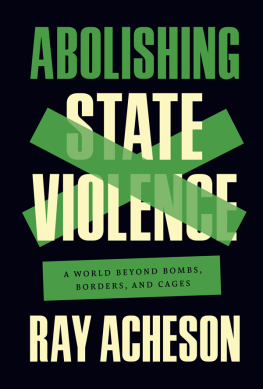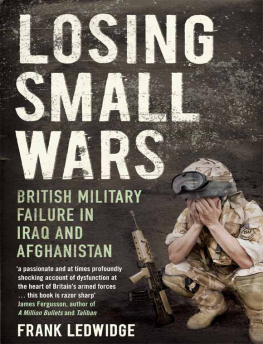First published 2012 by Pluto Press
345 Archway Road, London N6 5AA
www.plutobooks.com
Distributed in the United States of America exclusively by
Palgrave Macmillan, a division of St. Martins Press LLC,
175 Fifth Avenue, New York, NY 10010
Copyright Brian Rappert 2012
The right of Brian Rappert to be identified as the author of this work has been asserted by him in accordance with the Copyright, Designs and Patents Act 1988.
British Library Cataloguing in Publication Data
A catalogue record for this book is available from the British Library
ISBN 978 0 7453 3180 5 Hardback
ISBN 978 0 7453 3179 9 Paperback
ISBN 978 1 8496 4773 1 PDF eBook
ISBN 978 1 8496 4775 5 Kindle eBook
ISBN 978 1 8496 4774 8 EPUB eBook
Library of Congress Cataloging in Publication Data applied for
This book is printed on paper suitable for recycling and made from fully managed and sustained forest sources. Logging, pulping and manufacturing processes are expected to conform to the environmental standards of the country of origin.
10 9 8 7 6 5 4 3 2 1
Designed and produced for Pluto Press by Chase Publishing Services Ltd
Typeset from disk by Stanford DTP Services, Northampton, England
Simultaneously printed digitally by CPI Antony Rowe, Chippenham, UK and
Edwards Bros in the United States of America
Preface
This book is the product of over ten years of engagement with efforts to limit the humanitarian harms of conflict. That path began with a chance opportunity to take part in the Amnesty International (UK) Working Group on the Arms and Security Trade. Since then, my thinking and practice has benefited from experiences with many individuals and organizations.
The work conducted for this book could not have been undertaken without the assistance of many people. My particular thanks to Brian Balmer, Eitan Barak, Carole Boudeau, John Borrie, Maya Brehm, Robin Collins, Catelijne Coopmans, Simon Conway, Stuart Croft, Bonnie Docherty, Malcolm Dando, Chandr Gould, Alastair Hay, Peter Herby, Iain Lang, Susan Maret, Brian Martin, Linsey McGoey, Thomas Nash, Kathryn Nixdorff, A.N. Other, Margarita Petrova, Elvira Rosert, Ben Rusek, Ken Rutherford, Andy Stirling, Seb Taylor, Susanne Weber, Virgil Wiebe, Steve Woolgar, and Steve Wright. A special thanks to Giovanna Colombetti for, well, so much. A special thanks to Richard Moyes as well. I have had the good fortune to work closely with several inspiring people over the course of my career. Richard has been a steadfast colleague and friend in investigating the machinations of statecraft.
How to Look Good in a War has been informed by work undertaken with disarmament and human rights groups such as Action on Armed Violence, Cluster Munitions Coalition, Landmine Action, and Pax Christi (Netherlands). I conducted dozens of presentations related to the themes of this book, at forums such as the Biological Weapons Convention, the Certain Conventional Weapons Convention, the Oslo Process, and the UNIDIRs Discourse on Explosive Weapons Project. My thanks to all those that participated in these events.
Sections of the book are reworked reformulations of parts of earlier publications. Kind permission was given by John Benjamins Publishing Company Amsterdam/Philadelphia for drawing on elements of Brian Rappert, (2011) The Language of Judgement, Spin, and Accountability Journal of Language and Politics 10(2): 182203; the Taylor and Francis Group for elements of Brian Rappert and Richard Moyes (2010) Enhancing the Protection of Civilians from Armed Conflict: Precautionary Lessons Medicine, Conflict & Survival 26(1) JanuaryMarch: 2447, and Brian Rappert (2012) States of Ignorance: The Unmaking and Remaking of Death Tolls Economy and Society 41(1): 4263; Emerald Group Publishing Limited for elements of Brian Rappert, Richard Moyes, and A.N. Other (2011) Statecrafting Ignorance: Strategies for Managing Burdens, Secrecy, and Conflict in S. Maret (ed.) Government Secrecy (Research in Social Problems and Public Policy, Volume 19) London: Emerald: 301324 and Landmine Action for elements of Brian Rappert (2008) A Convention beyond the Convention: Stigma, Humanitarian Standards, and the Oslo Process, London: Landmine Action.
Introduction: Grasping Shadows
The scene: On November 17, 2004, the British Foreign Secretary Jack Straw stood before the House of Commons to offer a latest statement on the conflict in Iraq. As with so many others, this one was given at a time of turmoil. Continuing attacks by insurgents and terrorists, the recent US siege of Falluja, and the extensive fighting in Najaf were just some of the events casting doubt on the security situation in the country.














